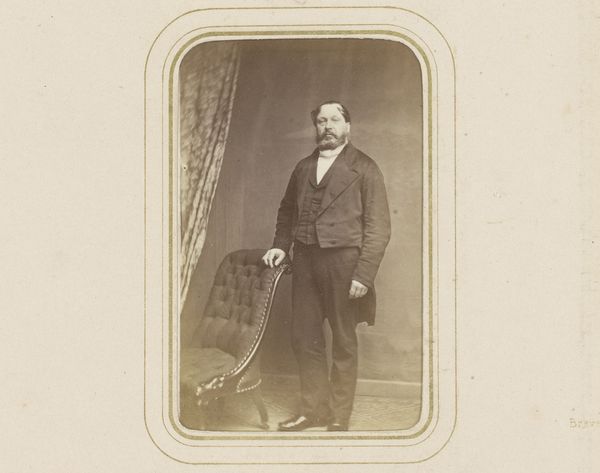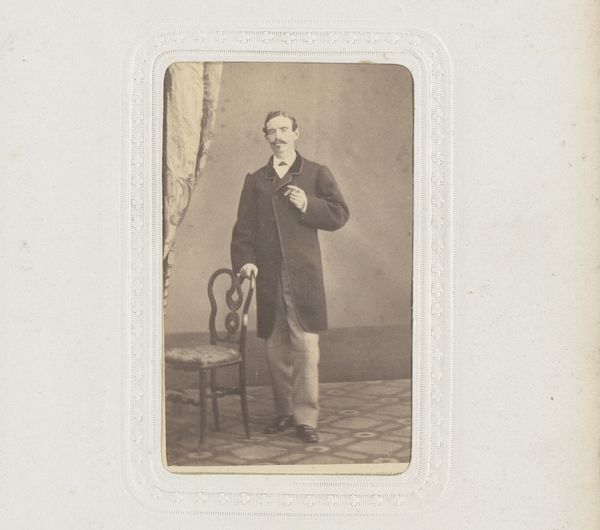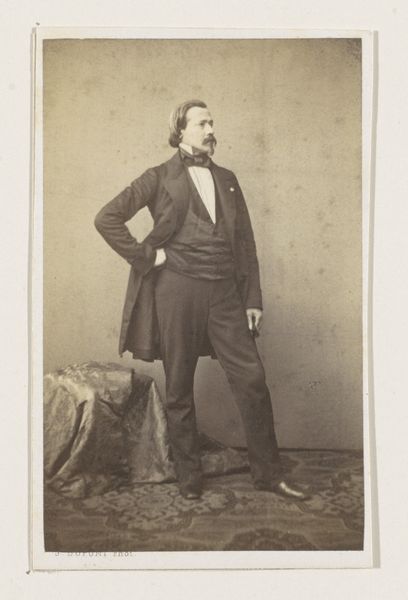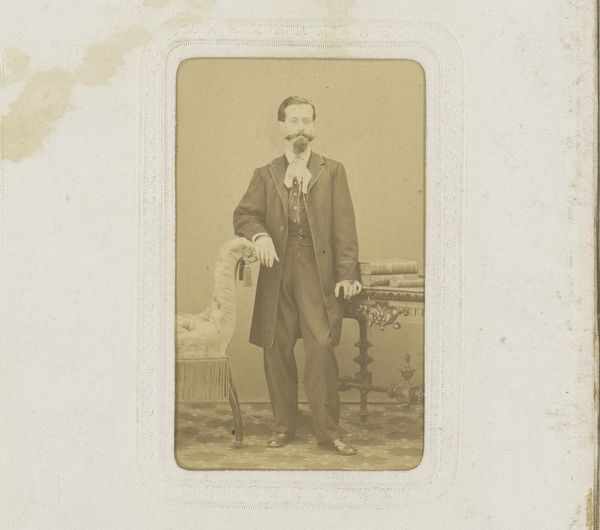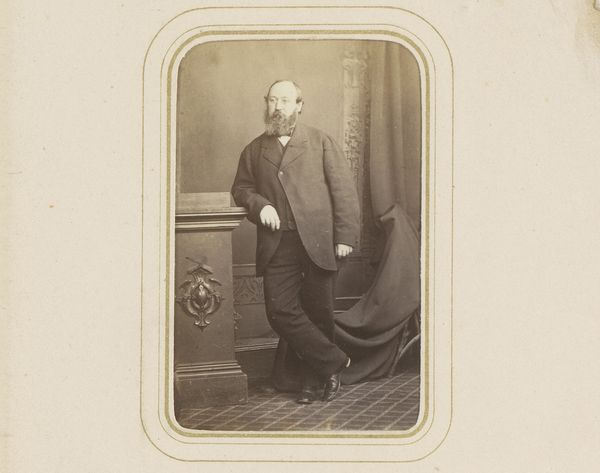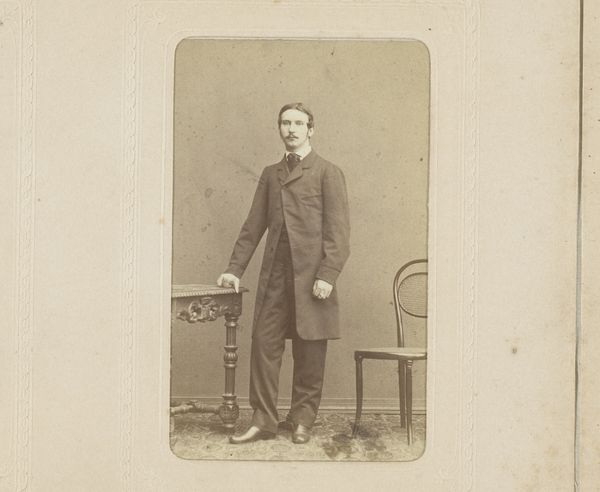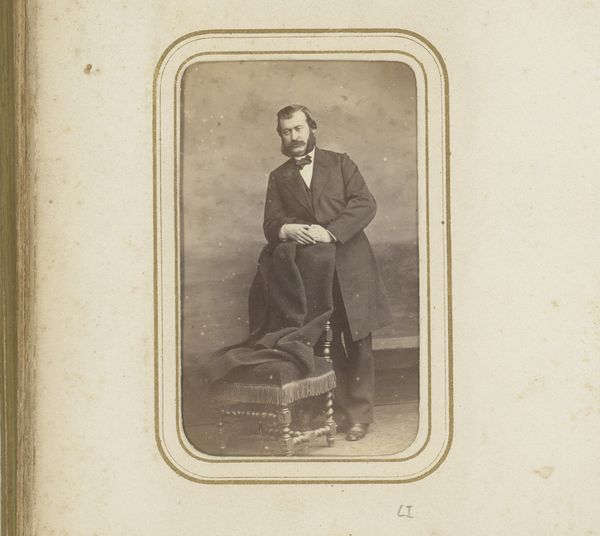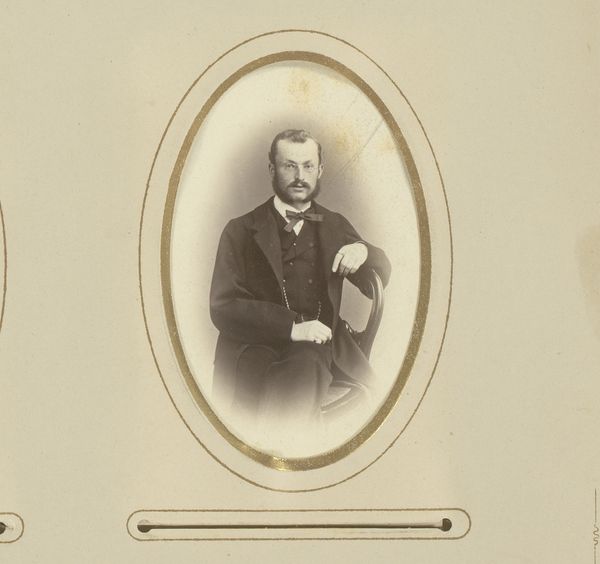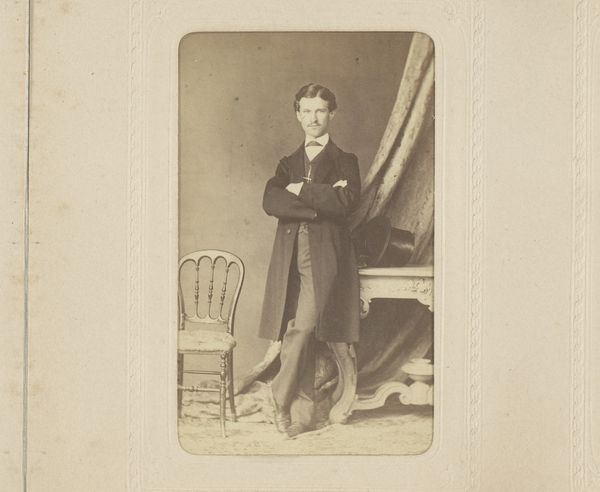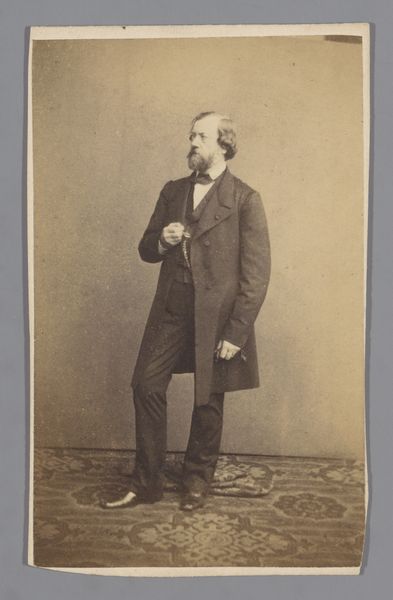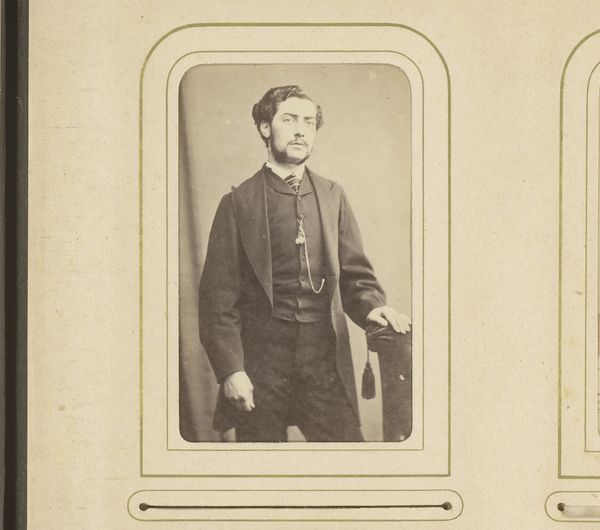
photography, gelatin-silver-print
#
portrait
#
photography
#
historical photography
#
historical fashion
#
gelatin-silver-print
#
genre-painting
#
realism
Dimensions: height 87 mm, width 53 mm
Copyright: Rijks Museum: Open Domain
Curator: What strikes me first is the stark stillness—almost melancholy—in this gentleman's posture. Editor: I’m drawn in by this intriguing gelatin silver print, "Portret van een man met snor en bakkebaarden, staand bij een tafel," placing our sitter in the late 19th century, between 1860 and 1900. Think about the social conventions governing men's portraiture then! Curator: The texture created by the gelatin silver process is crucial; notice the way the light catches his dark jacket and the tassels of that drape. The photographer, A. Helm, uses this effect masterfully. Do you think there’s a performative aspect to this type of early photographic portraiture? Editor: Absolutely, given the long exposure times, he probably had to sit completely still for minutes. It would have demanded patience but also reinforces specific notions of middle-class masculinity, emphasizing composure and a very still stoicism in an era defined by the rise of industrial labor and bourgeoisie ideals. Consider the labor involved: from mining the silver, preparing the gelatin emulsion, taking, printing, to finally viewing and storing the image, each stage signifies specific levels of class mobility during a time of change. Curator: His carefully groomed moustache is an undeniable declaration, isn’t it? An expression of masculinity presented with the aid of professional barbering. The table looks commercially produced, too, doesn't it? How might photography be linked to the rise of manufacturing in the Victorian Era? Editor: This object provided a way for individuals, especially men, to perform certain class positions. Photography was a valuable material production; a business, trade, and source of commodified goods like the man’s clothing, side table, curtains and gelatin silver itself. The details tell an implicit narrative around what his labor means during times of change. It shows new markets forming. Curator: Viewing art objects through this industrialization lens changes our reading, indeed. The photograph becomes not just a representation, but also an artifact, revealing both individual intention, broader historical currents, as well as technological processes that shaped 19th century identity. Editor: It enriches the way we look. Now, it really compels me to dig into records to find him. His story is worth knowing.
Comments
No comments
Be the first to comment and join the conversation on the ultimate creative platform.
